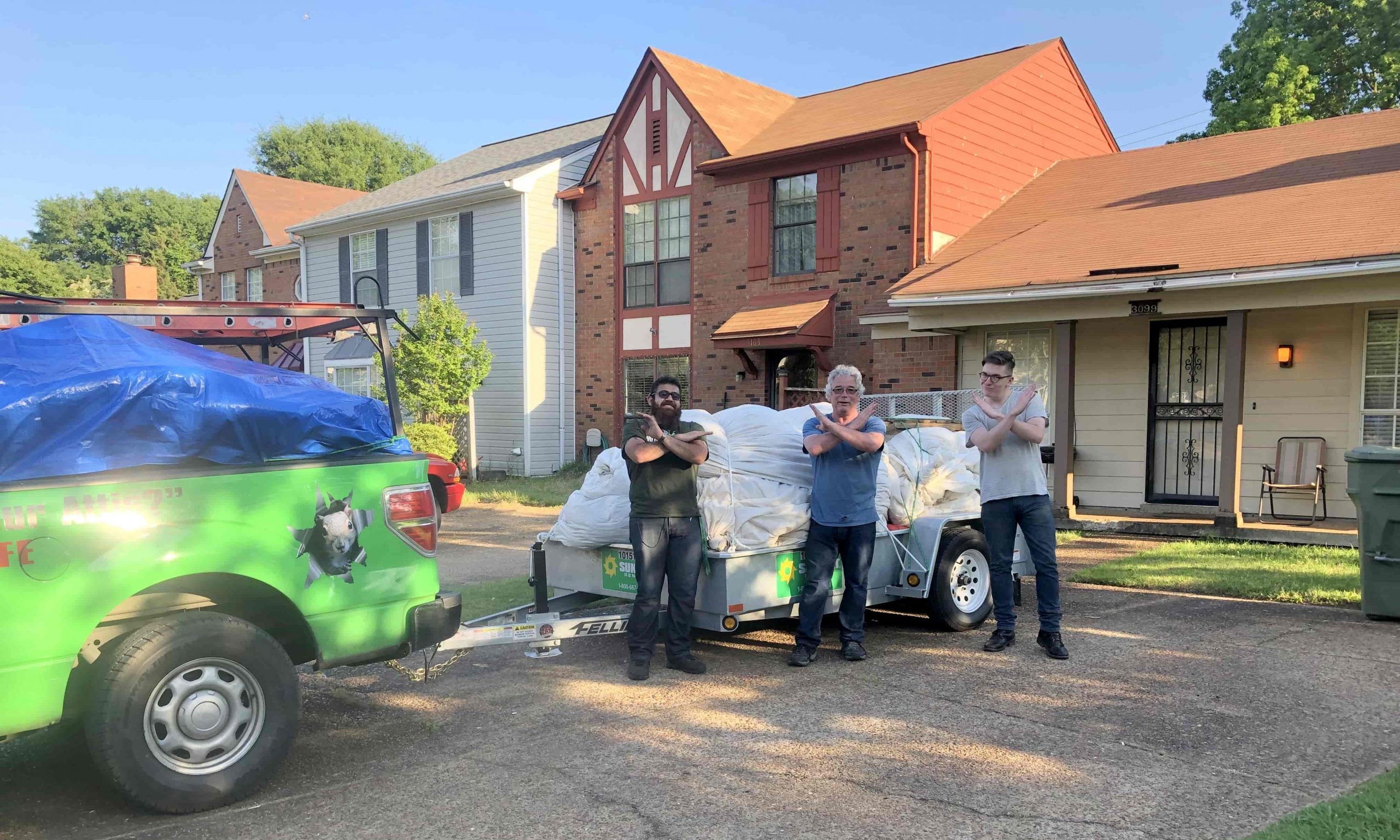
Call for Your Exclusive Wildlife Inspection Report.®
Skunk Removal
Skunks are easy to recognize, thanks to their distinctive black and white fur. However, what they’re most notorious for is their odor. When threatened, during mating season or sometimes, just randomly, they release a spray that contains sulfur-based organic compounds called thiols from their anus. This noxious scent is long-lasting and can even irritate the eyes.
Problems Associated with Skunks
Skunks are one of the most prevalent wildlife in suburban areas in the United States. In the Oklahoma City area, in particular, there are so many that homeowners sometimes catch skunks in their traps when they intended to catch a cat or raccoon.
In their natural habitat, they live in dens, where they even huddle together when it’s cold. However, female skunks want somewhere safe, warm, and with an adequate food supply when they want to raise their young. Unfortunately, they have learned to reside with humans.
Here are some of the major problems they can cause for homeowners:
- Residing under the porch, deck, or shed.
- Air pollution from the appalling smell of their spray.
- Spraying or fighting with pets, usually dogs.
- Digging holes in the yard while they search for grubs.
- Damaging beehives, crops, golf courses, chicken coops, and more.
Removing Skunks from Under a Shed or Porch
Pregnant skunks usually give birth and raise their young under the shed or porch because of the safety and warmth it provides. This means that if you see an adult female skunk under your deck, she probably has her litter there too. So, you have to remove both the mother and her litter. Here’s how to do that.
Step 1: Search the entire perimeter of your home and locate all entry holes.
Step 2: Seal all the entry holes, but leave one open.
Step 3: Install a one-way exclusion device on the last opening or a proper-sized cage trap.
Step 4: Inspect underneath your shed, porch, or deck to bring out the babies. Make sure you wear your gloves.
Step 5: Relocate the entire family to a location that’s at least 10 miles away.
Step 6: Remove all the feces and decontaminate the entire space with an enzyme cleaner.
Step 7: Seal off the last hole.
Get Quote for Your Exclusive Wildlife Inspection Report.®


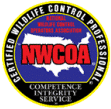
More Information on Skunk Trapping
It is important to note that the trapping, relocation, or euthanization of skunks is subject to state laws. While they may be successfully excluded, in some cases, the only viable option may be to trap them. With licensed wildlife professionals like Wildlife X Team Oklahoma City, we can help you legally deal with your skunk problem.
Trapping is an art that requires a knowledge of skunk behavior to attain good results. But generally speaking, here’s how you go about it.
Step 1: Determine if trapping is the best course of action.
Step 2: From the dozens of skunk traps, select the appropriate one.
Step 3: Set the trap in the path most used by the skunk and make sure it’s well camouflaged with the surroundings.
Step 4: Use the appropriate bait. Examples include canned fish (like sardines), fresh insect larvae, crisp bacon, cat food, or bread with peanut butter.
Step 5: Monitor the trap daily so you can relocate it promptly.
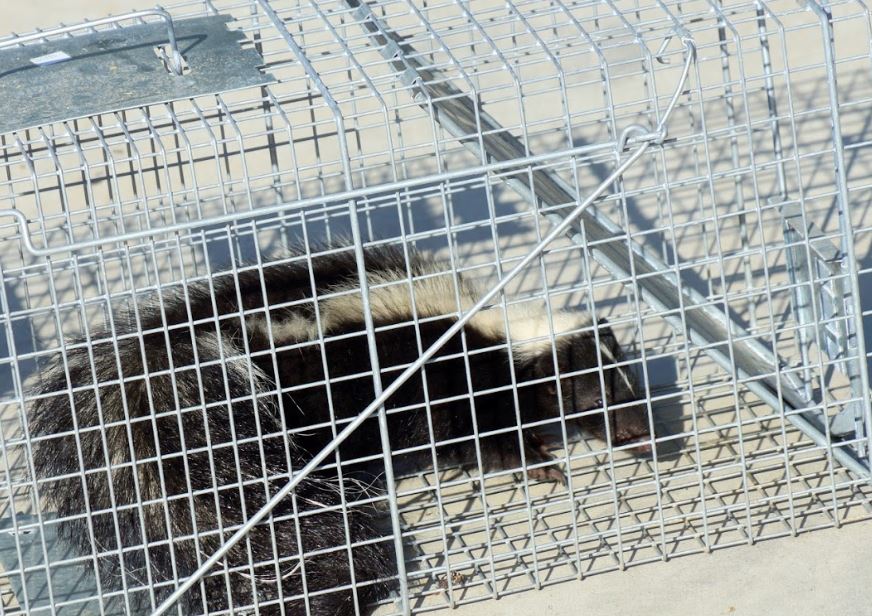
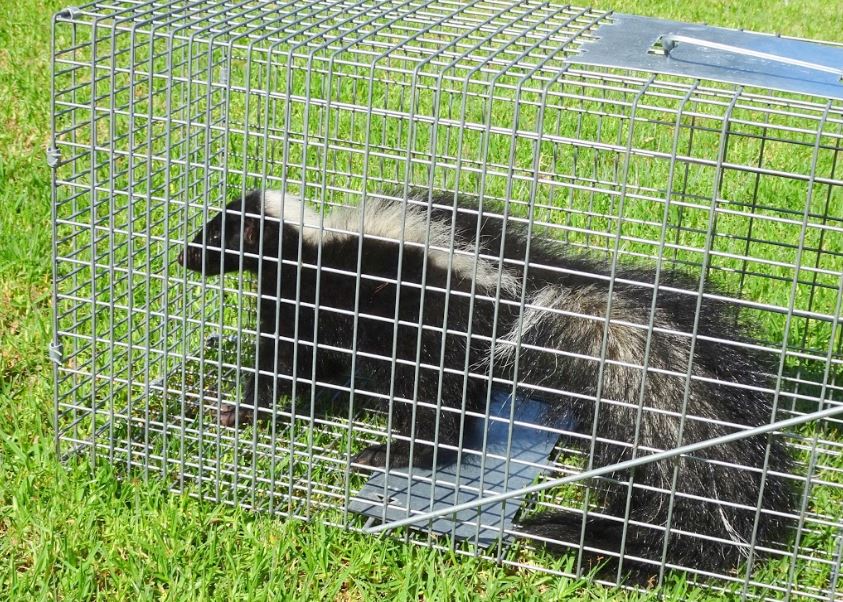
More Information on Decontamination
Since skunk spray is very persistent, enzyme-based cleaners are needed to eliminate the organic matter and deodorize the space. It may not be 100% effective but it will drastically reduce the odor.
To decontaminate a space, mix 1 quart 3% hydrogen peroxide, 1/4 cup baking soda, and 1 teaspoon liquid soap. Use the solution immediately as the solution is unstable.
If your pet has skunk odor on it, bath or shampoo it thoroughly, then rinse it after 5 minutes. Repeat if the smell persists.
If the spray gets into your eyes, rinse it with water as soon as possible.
Conclusion
Dealing with skunks can be challenging. That’s why it’s best to leave it to the professionals at Wildlife X Team Oklahoma City, where we handle the removal process from start to finish. If you are dealing with a skunk problem and live in the Oklahoma City area, give us a call today!
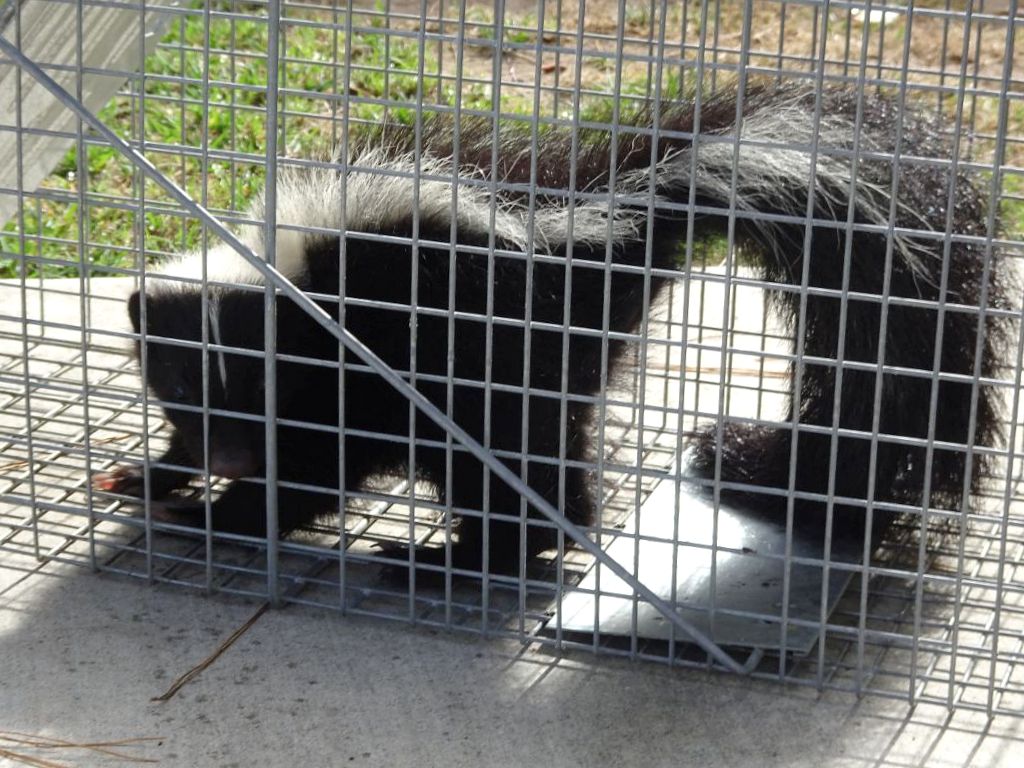
How To Prevent Your Home From Skunks
Depending on where you live and what type of area your home is located in, noticing a skunk or two in the area may not startle you too much. If you are not used to seeing wildlife around your home, it may be frightening. Skunks are not overtly aggressive animals, but they can be dangerous because of the diseases or bacteria they carry and could potentially leave around or inside of your home. The disease and bacteria can be spread both through direct contact with the animal, but feces and urine left behind can spread the bacteria as well. Visit skunkpestcontrol.com to learn more about how to keep them away from your home and family.
Wildlife X Team Oklahoma City has the ability to trap and remove animals that have made their way into or around the perimeter of your home or building. We can both remove the animal from the premises and relocate it to another area. However, the best sort of animal or skunk control is prevention. If you are able to implement ways to prevent these animals from finding their way to or inside your home, you will be in even better shape. Here are a few ways to prevent your home from skunks:
Food, Fruit Trees, Trash
Long story short, skunks and other wildlife are attracted to your home for simple reasons. Your home or the perimeter around your home may offer attractive food and water access. The easiest way to prevent animals from making their way into or around your home is to make your home as unattractive to them as possible. Food is a huge motivation for them to move to a new area.
Be sure to keep any and all sources of food around the perimeter of your home consistently secured. Keep your trash bins shut, secured, and out of easy reach. Do not keep dog food or other animal meals outside of the home. They will enjoy your pet’s dinner as much as your dog does. If you have fruit trees in your yard, be sure to pick all ripe fruit and gather any fallen fruit that is on the ground. The leftover, fallen fruit can be an easy food source.
Repair Potential Entries
If skunks or other wildlife have found their way to the general area around your home, there’s no need to worry about them invading your house if you have kept up with home repairs and they have no easy way to access the inside of your home. Skunks are looking for food, water, and shelter away from inclement weather. Your home can be that shelter if they can find access.
You can keep them from accessing your home by repairing any broken areas with holes or weak spots that could be easily penetrated. Wildlife X Team Oklahoma City has the knowledge and experience to inspect your home and let you know of any areas that will provide the animals with easy access to your home.
Repellents
A simple method to add to your prevention toolkit is repellent. Modifications of the habitat around your home are some of the most effective and beneficial, but spraying the area with pepper spray or some other unattractive substance can aid the entire process. The smell of Ammonia often works well with prevention and deterrence as well. Skunks are scared of bright lights, so motion sensor lawn lights can help with prevention and deterrence as well.
If your home has become a potential hotspot for skunks and other wildlife, Wildlife X Team Oklahoma City has the knowledge and experience to guide you through both prevention and removal. We can give you the advice to help you deter the animals from your space and assist you if they have already arrived and made themselves comfortable.
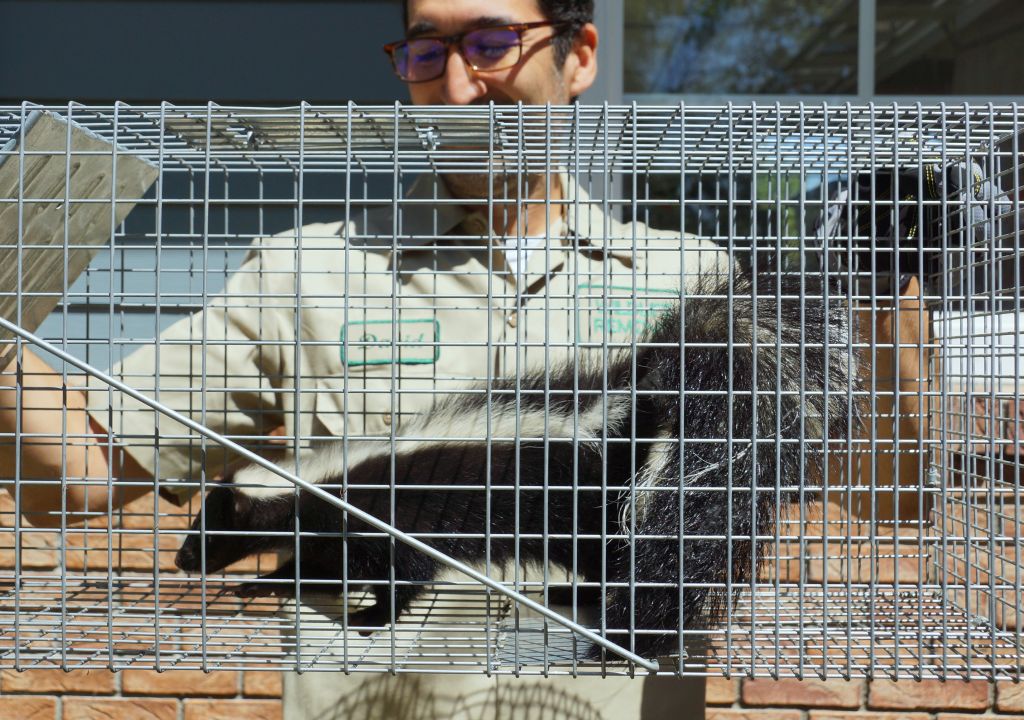
How to Get Skunks Out Of The Yard
Look at a skunk, and all you see might be a cute and docile-looking creature. Well, that’s true. But in the face of threat, a skunk can get nasty real quick. Skunks are infamous for their spray (which is made up of sulfur compounds, called thiols), which they release to defend themselves. Visit howtogetridofskunk.com to learn more about how to get rid of skunks.
Asides from the pollution they cause with this noisome smell, skunks are also notorious for the damage they cause in yards. They will tear up the sod in search of grubs. They will wreak havoc in the garden as they find corn, berries, cherries, and many other plants delicious.
What’s more, they will burrow underneath the house to take up residence. But their actions can weaken the foundation of your home. Even worse, they are the primary carriers of rabies in the United States.
For these reasons, you should get them out as soon as possible. This post explores some of the most effective strategies we use at Wildlife X Team Oklahoma City to get rid of skunks.
- Eliminate attractants in your yard
If your yard isn’t providing any benefit to skunks, then there’s no reason why they should remain. So what are the major attractants for skunks?
- Food
This ranges from pet food to garden plants, to garbage, to grubs, earthworms, and insects. If you have poultry, skunks may also attack chickens and eat their eggs.
- Shelter
Who doesn’t like a comfy place to call home? Skunks are no exception. Skunks (especially pregnant ones) are quick to take up residence in the attic, chimney, garage, basement, under the porch, deck, or shed as it provides a greater level of comfort and safety.
Hence, to get skunks out of your yard permanently, you need to remove all incentives causing them to stay. Here’s what our professionals at Wildlife X Team Oklahoma City advise you to do:
- Do not leave pet food outside, especially at night.
- Ensure that your garbage is well sealed.
- Build a fence around your garden to protect your plants.
- Install chicken wire around the base of your house to deny them access under your house.
- Apply Skunks Repellents
There are a few repellents that have found moderate success in driving skunks away. Here are some of the most common ones:
- Homemade skunk spray: Put hot peppers, jalapeno, onions, and cayenne pepper into a pot. Then add water and boil for a few minutes. Spray the mixture around areas frequented by the skunks.
- Predator urine: Predators of skunks include coyotes, foxes, bobcats, and large owls. Applying the urine of these predators on your yard signals to skunks that your yard is a no-go area.
- Ammonia: Soak ammonia in rags and use it to surround the perimeter of your yard.
Note that with time, repellents wear off, especially after heavy rainfall. That’s why they need to be continuously reapplied. What’s more, repellents will not work if you haven’t removed attractants.
- Trapping and Relocation
Here’s the thing: some skunks will persistently remain a nuisance regardless of what you do. For those select few, the best option is to catch and release them somewhere else.
Trapping a skunk is no easy task. You need a live trap, and you need to set it strategically to be effective. Baits that work well for luring skunks include canned fish, cat food, fresh insect larvae, and corn.
After catching the skunk, it’s time to relocate. First off, ensure you cover the trap with a thick towel. This will serve as a shield in case the skunk tries to spray you. Then take the trap to at least 10 miles away from the capture side before you release it.
Conclusion
Dealing with a skunk infestation yourself is a risky endeavor. That’s why it’s best to involve qualified wildlife professionals. Wildlife X Team Oklahoma City is perfectly qualified to find a permanent solution to any skunk infestation problem.
